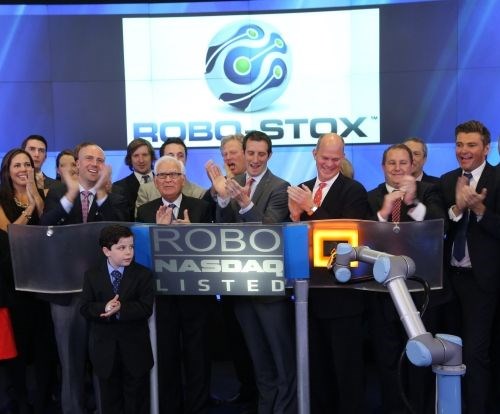Robot Rings NASDAQ’s Closing Bell
An industrial robot performed the task, which marked the launch of the world’s first index that benchmarks the value of robotics and automation.
Share





Yesterday, a robot rang NASDAQ’s closing bell, which is the first time a non-human has performed this task. The event marked the launch of the ROBO-STOX Global Robotics and Automation Index exchange traded fund (ETF). Appropriately enough, the ticker symbol is ROBO.
This ETF is the world’s first index to benchmark the value of robotics, automation and related technologies. The fund invests primarily in the equity securities of robotics and automation companies. It seeks to help investors take advantage of the robotics trend as it continues to grow through capturing a representative portfolio of the industry.
The robot that pressed the button activating the closing bell was a UR5 model from Universal Robots equipped with a three-fingered Schunk gripper. A design advantage of this company’s robots is that they can work alongside people and do not require safety fencing. If the robot comes into contact with an employee, its built-in force control feature limits the forces at contact and does not cause bodily harm, adhering to the current safety requirements on force and torque limitations.
The company says 80 percent of the more than 2,000 UR robots deployed globally operate with no safety guarding in the immediate vicinity of employees. In fact, here’s one application with video.
Related Content
-
Translating a Prototyping Mindset to Production
The experimental mindset that benefited BDE Manufacturing Technologies as a prototype job shop has given it an adaptable edge as a production facility.
-
Cutting Part Programming Times Through AI
CAM Assist cuts repetition from part programming — early users say it cuts tribal knowledge and could be a useful tool for training new programmers.
-
Using the Toolchanger to Automate Production
Taking advantage of a feature that’s already on the machine tool, Lang’s Haubex system uses the toolchanger to move and store parts, making it an easy-to-use and cost-effective automation solution.





















.png;maxWidth=300;quality=90)
